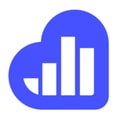

Unclaimed: Are are working at Kissmetrics ?
Kissmetrics Reviews & Product Details
Kissmetrics is a customer engagement automation platform that provides analytics and insights into user interactions with websites and applications. It focuses on tracking the behaviors of individual users across devices to help businesses understand and optimize customer experiences and conversion rates.

| Capabilities |
|
|---|---|
| Segment |
|
| Ease of use |
|
| Deployment | Cloud / SaaS / Web-Based |
| Support | Email/Help Desk, FAQs/Forum, Knowledge Base |
| Training | Documentation |
| Languages | English |


Compare Kissmetrics with other popular tools in the same category.

Kiss is very flexible and powerful-- it does a great job of giving you a view of how things are interacting deep within the product/site. They've also added some channel tracking capabilities that are really good so you can see how many of your Google SEO visitors converted vs paid search vs direct visits, etc.
The results don't always foot with what I validate with my database, which makes it more of a "general idea" tool rather than the holy bible. Also, I dislike that when I want to download a report I have to wait for an email (which might end up in the junk mail filter) then click that, rather than having a report center I could download from when it's ready.
It solves so many problems-- we did a lot of testing of pricing, site features, etc, and it could track responses for test and original cases through all the metrics you could want. I also use it to pull a monthly marketing report to see the effectiveness of different spend.
We were able to define our complex conversion funnel and measure accurately where each lead comes from, how they move through, what hangs them up, and how we can improve the funnel to maximize revenue. Total package for a marketer like me, and that doesn't even include all the other areas of the business it supports.
Nothing, really. Implementation is a bit developer-heavy, but custom solutions require effort to setup properly. Need a SQL-like reporting tool so it's easier to pull whatever data we need but I understand they are building this.
Marketing funnel measurement and optimization. Finally, we have accurate CPA measurements across the whole funnel. We're using the data to adjust our marketing budget, learn where to invest design and developer effort, and to create custom user experiences for different audience segments.
User my user tracking and the ability to greatly manage and adjust the amount of content I track so that it is tailored to my needs.
I would like to ability to more broadly see people who did xx also went on to do yy
We are now able to track our cost of customer acquisition vs our customer value numbers to better utilize online advertising and content marketing.
The amount of details in each report makes it so the insights you learn through the tool are actionable.
The steep learning curve makes it a bit difficult but once you realize how the basics work, getting further ahead isn't too difficult.
Where are our customers coming from and what action steps take them to point of sale.
KISSmetrics gives you a single place to see how your business is doing. In the past, this kind of information was spread across our Infusionsoft, Google Analytics/Webmaster Tools, and other software platforms. It's also incredibly useful to have data attributed to people rather than just website hits. This attribution has led us to behavioral insights that we otherwise wouldn't have access to - and that's made us more profitable and productive with our marketing efforts. Their new path report is INSANELY great and helps us identify funnels that we haven't even thought of building out yet. The Live window is very useful when testing new events, tracking live campaigns, or making the initial installation.
It would be great to have a simultaneous event tracker, but that doesn't exist at the moment. That would cut down on redundant data/event capture and give us insights into what events are most highly correlated with one another. You can do this with the reports section now, but only with individual events.
We're measuring our onboarding process at the moment so we can identify highest dropoff rates. We knew in the past that the first 30 days of membership was crucial, but KISSmetrics gives us the information we need to know what to focus on during those 30 days. We also use it to measure our marketing campaign effectiveness based on a single end goal (software demos). Since KISSmetrics can recognize UTM parameters as well as their own API properties, user acquisition data is all in one place. (helpful!!!)
KissMetrics is excellent for tracking all of the little things on your websites. From log in buttons to purchase buttons you can track it all.
Although Kissmetrics is excellent to use, before you start using it properly it takes some time to actually learn the steps on how to get started.
Our team at MindMarket is now tracking the apecific advertisements people came in to our website from. This is saving us 100's of wasted dollars on unecessary advertisement.
The low cost and high performance
Implementation can be tricky
More targeted email campaigns
It is simple and useful. You will not find any unnecessary data which overwhelm. Its user interface is really simple which everyone can easily understand.
Last time I checked, it was not real-time. I think this feature should be added asap.
Churn and retention. If you really want to know about your customer, you should definitely use Kissmetrics. The most I really like about Kissmetrics is giving LTV and Cohort analysis.
Kissmetrics has many qualities that have been positive for our organization, most notably secure web data analytics and tracking customers, content and social media submissions quickly from our desktops and mobiles. It is a straightforward installation tool; it has taken us a few minutes and allows us to enjoy excellent visualization and customization options. What I liked the most is that it provides safely and reliably a large amount of data and information that allows us to control better what we need to perform as analysts; we use it to make decisions based on data, and in my opinion, we are happy with the results we have obtained.
It is not an intuitive or easy-to-use tool; it takes a little time to adapt and master the proposed learning curve. Likewise, we have found it challenging to summarize data and make integrations with third-party tools.
The main benefit we have obtained with Kissmetrics has been robust data analysis. It has provided our work team with valuable solutions to improve the web experience and effectively track leads, content and presentations on social networks. Other features we have found interesting have been visitor metrics and obtaining campaign statistics. Kissmetrics has helped us solve problems and streamline digital marketing tasks extraordinarily, benefiting the entire organization's overall growth and web presence.
Kissmetrics suits my way of working very well because it is easy to use, has fantastic support and has an excellent platform for ongoing data analysis, all of which I find very useful. It's easy to operate and provides quick access to a wealth of valuable tools for researching, discovering and solving problems in the enterprise and beyond. It loads quickly, offers powerful search tools, provides revealing data in a clear format, and generates digestible reports that can be studied effortlessly. In the years I have used it, it has become quite robust, and its many enhancements have been tremendously helpful and impressive.
There seem to be software issues inside that cause it to run slowly and even crash.
Data management focuses entirely on the ever-changing nature of day-to-day operations and, as such, is very efficient and has provided a great strength that has spanned many progressive analytical scenarios. I am relieved that we have finally established a set of guidelines that the corporation can rely on for this service. I am completely satisfied every time I use Kissmetrics, and I have no doubt you will be too. Secure data management.
